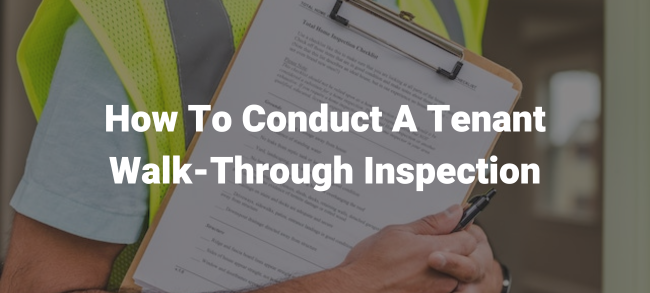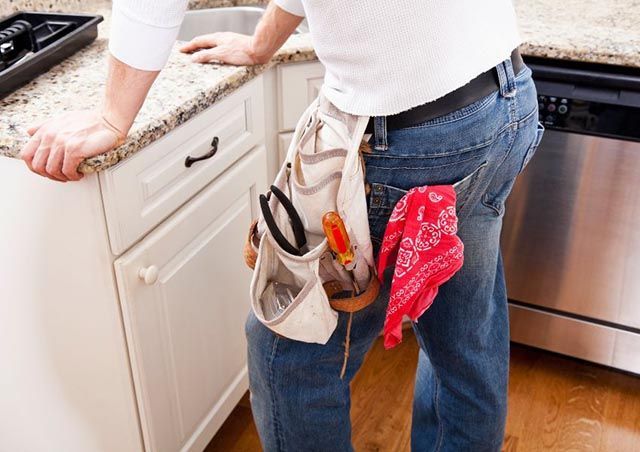
How To Conduct A Tenant Walk-Through Inspection

Conducting a tenant walk-through inspection is a crucial process for landlords to ensure their property remains in good condition and that any issues are addressed promptly.
Here’s a detailed guide that will walk you through the steps and best practices to effectively conduct these inspections, helping you protect your investment and maintain a positive relationship with your tenants.
Introduction to Walk-Through Inspections
A walk-through inspection, also known as a move-in/move-out inspection, is a comprehensive review of a rental property before a tenant moves in or after they move out. The primary goal is to document the condition of the property to ensure that any damage caused by the tenant can be accurately identified and addressed.
Benefits of Walk-Through Inspections with Tenants
- Transparency and Trust: When you conduct the inspection together with the tenant, it fosters a sense of openness and mutual respect. This transparency can build trust, making tenants feel more comfortable and valued. Trust can lead to better care of the property and prompt reporting of any issues.
- Clear Expectations: A joint inspection helps set clear expectations right from the start. Both parties can discuss and understand what is expected in terms of property maintenance and tenant responsibilities. This clarity can reduce misunderstandings and disputes during the tenancy.

- Immediate Clarifications: During the inspection, tenants might have questions about the property or the terms of the lease. Addressing these questions immediately can prevent issues down the line. It also ensures that the tenant fully understands what is noted in the inspection report.
- Documentation of Condition: A joint inspection allows both the landlord and the tenant to agree on the condition of the property at move-in. This documentation is crucial when assessing any changes or damages at the end of the lease term. It helps simplify the process of returning security deposits and handling charges for damages.
- Educational Opportunity: For many tenants, especially those renting for the first time, a walkthrough can be an educational experience. Landlords have the opportunity to explain how various appliances work, what routine maintenance looks like, and how to handle emergencies. This guidance can lead to better care of the property and fewer urgent calls to the landlord.
- Proactive Maintenance and Repairs: During the inspection, tenants can point out existing issues or concerns that might not be immediately apparent to the landlord. Addressing these issues early can prevent more significant problems and associated costs later. It also shows responsiveness and care about tenant quality of their life.

- Enhanced Legal Protection: Thorough documentation and signed agreements during the walkthrough can provide legal protection if disputes over property conditions arise. This process ensures that there is a clear, agreed-upon record of the property’s condition at the time of the tenant's move-in, which can be invaluable in legal settings or disputes.
Preparing for the Inspection
- Schedule the Inspection: It’s important to schedule the inspection at a time that is convenient for both you and the tenant. Ensure that the tenant has ample notice about the inspection date and time.
- Review Your Lease Agreement: Before conducting the inspection, review your lease agreement to understand and clarify the conditions related to the property’s condition and the tenant’s responsibilities.
- Prepare an Inspection Checklist: Create a detailed checklist that covers all areas of the property, including living areas, bedrooms, kitchen, bathrooms, and any outdoor spaces. This checklist will guide the inspection and ensure consistency.
- Gather Necessary Tools: Bring a camera or smartphone for photos, a flashlight for checking dark or enclosed areas, and a notepad or digital device for notes.
Conducting the Inspection
- Walk Through with the Tenant: Whenever possible, walk through the property with the tenant. This promotes transparency and allows for immediate discussion of any issues.

- Document Everything: Use your checklist to systematically assess each part of the property. Take detailed notes and photographs of any damage or issues. This documentation will be crucial for comparing the property’s condition before and after the tenancy.
- Check for Functionality: Beyond aesthetic conditions, check the functionality of all fixtures and appliances. Test smoke detectors, look for leaks under sinks, and ensure that all windows and doors open and close properly.
- Discuss Findings with the Tenant: If you find issues, discuss them on the spot with the tenant. Clarify what will be rectified by the landlord before move-in and what the tenant is expected to maintain.
- Focus on Safety Issues: Prioritize safety-related issues such as electrical problems, gas leaks, or security features. These are not only critical for the tenant's safety but also for the legal compliance of your rental property.
After the Inspection
- Provide a Written Report: After the inspection, provide the tenant with a detailed report of your findings. Include photographs and notes from the walkthrough. This report serves as a formal record of the property condition at the time of the tenant's move-in.
- Discuss Repair Responsibilities: Clearly communicate who is responsible for necessary repairs. This should align with what is stipulated in the lease agreement.

- Get Signatures: It's crucial to have both parties sign off on the inspection report. This acknowledgment by the tenant confirms that they agree with the findings.
- Keep Records: Retain copies of the inspection report and all communications about the inspection. These documents can be vital in case of disputes or legal issues.
Conclusion
Conducting thorough tenant walk-through inspections are essential for managing a rental property effectively. By preparing properly, documenting meticulously, and communicating clearly, you can maintain the value of your property and foster a trustworthy relationship with your tenants.
Regular inspections also help ensure that the property is well-maintained and safe, contributing to a more stable and profitable rental arrangement. Hiring a professional property manager can help with this task.
If you need help, call
Advantage Realty Services, and one of our experts will be happy to guide you.

Advantage Realty Services Inc







